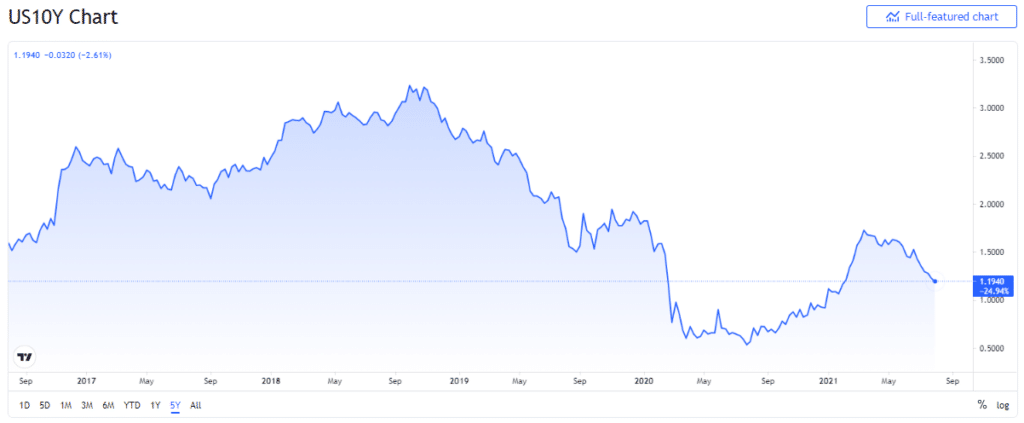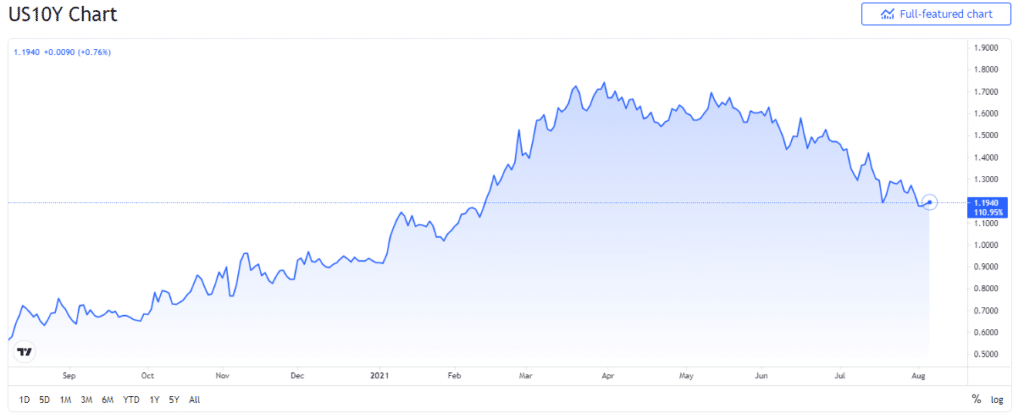The stock and bond market has had a love-hate relationship. During the risk-off events like the recent Covid-19 crisis, investors flee to safer assets such as bonds while they withdraw from equities, creating an inverse relationship between their returns.
On the other hand, when bond prices rise, it means that the bonds are in demand, and companies are finding it easy to borrow money. This means that the companies’ stock prices get a boost, thus creating a direct correlation between the returns of stocks and bonds.
Which of these relationships truly holds, and under what circumstances? If you notice, the first relationship is driven by investor sentiment while the second is driven by fundamentals. Unless a crisis creates severely negative sentiment in the markets, the second relationship holds more often and for a longer time period.
Bond prices and yields
Let’s learn about the relationship between bond prices and yields. A bond offers fixed coupon payments on its face value, typically $1000. When the price of a bond falls below its face value, it means that the bondholder is getting the same coupon payment for a smaller investment. The lower the bond price, the higher the yield, indicating an inverse relationship between the two. When yields fall, it means that bond prices are rising.
Significance of the US 10Y yields
The US Treasury bonds are considered to be the safest bonds in the world, given they are denominated in US dollars and backed by the Federal Reserve, which can print US dollars as needed. But bonds are of different tenors, ranging from 6 months to as long as 20 years.
To understand major long-term implications from movement in bond prices, market participants tend to track a longer-tenured bond, typically of 10 years. These are also among the most liquid treasuries and are frequently traded in the bond market. So, the US 10 year bonds are the de facto benchmark bonds for the world, and their yields are the benchmark yields.
But one might wonder that since the treasury yields represent the cost of borrowing for the government, how does it impact the cost of borrowing for corporations? Given US treasuries are the safest bonds, any other bonds issued by any entity apart from the US government are priced at a yield higher than the treasuries. The yields for corporate bonds can’t and will never fall below the treasury yields of the same tenor.
Impact of treasury yields on stock prices
Different types of bonds trade at what is termed as a ‘spread’ higher than the treasury yields. So, the safer a company, the lower its spread. For example, if a large company like Google issues 10-year bonds, their spread could be 30 bps. If the treasury yields are trading at 1.5% yields, then Google will pay 1.8%.
On the other hand, a relatively riskier company like Tesla could have spread as wide as 1.5%. So if treasury yields are at 1.5%, Tesla will raise funds at 3%. But since both are linked to Treasury yields, if the treasury yields fall down to say 1.2%, both will see a drop in their cost of funding.
If you look at the 5-year history of the 10-year yields, you will see that yields were falling in 2019, and in early 2020, there was a steep fall in the yields. This was the inverse relationship that we discussed above. The Covid-19 spread rapidly across the globe. Investors flocked to the worlds’ safest assets, driving down the yields while stock markets were spiraling down.

Simultaneously, the Federal Reserve cut interest rates to record low and undertook the largest quantitative easing program in history. The Fed bought hundreds of dollars worth of US bonds to pump liquidity into the system. This went on till the 3rd quarter of 2020 as economic conditions remained weak.

But in the 4th quarter, vaccines were announced and rolled out. The economic conditions started to improve. As a result, expectations started to increase that the Fed may not provide easy monetary conditions for much longer. In response to these expectations, yields started seeing a steady uptick, and in the first quarter of 2021, the yields crossed the psychologically important barrier of 1.50.
Current scenario and outlook
As you saw above, the 10-year yields reached as high as 1.75 and remained at elevated levels through May. However, over the past couple of months, the treasury yields have reversed their direction and are trading at the lowest level in the past five months.
This was a major surprise for market participants, and Wells Fargo’s director of rates strategy called it outright “confounding.” This is partly being attributed to the Federal Reserve, which wants to keep a lid on the yields and keep borrowing costs low. As a result, lower yields are expected to sustain in the near future.
This is likely to impact the markets in two major ways. One is that the low borrowing cost will continue for companies and hence will be a tailwind for the broader stock market. The second is that it will lead to a massive rotation out of value stocks into growth and small-cap stocks. Low rates create a risk-on environment which means that a high-growth period is expected in the near to medium term.
This makes high-growth stocks and small-cap stocks more attractive, leading to their outperformance. This trend can already be observed in the tech-heavy Nasdaq 100’s outperformance over the S&P 500. As long as yields remain low, investors are likely to make more money in high growth and smaller companies than over well-established value companies over the next few months.



